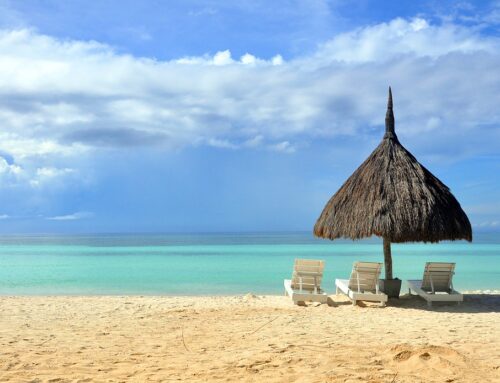
The Cost of Comfortably Retiring in the Philippines
The Philippines is a dream for many retirees. You get sunny beaches, warm locals, and a low cost of living. But how much do you really need to retire comfortably? You might hear numbers like $1,500 a month as a starting point, but that’s just for the basics. Retirement here can be as simple or as luxurious as you want. This guide helps you build a budget that fits your lifestyle, whether you just want the essentials or plan to enjoy travel, hobbies, and more.
Rent in the Philippines: From Budget to Luxury (₱5,600 to ₱112,000)
Housing is one of the biggest factors in your retirement budget. The good news is, you have lots of choices.
Basic apartments or studios start around $100 (₱5,600) a month. These units are simple but clean and functional. On the other end, if you want luxury living with space, modern amenities, and a great location, expect to pay closer to $2,000 (₱112,000) a month.
The rental price depends on where you live and how much space and comfort you want. Whether you prefer a cozy beach cottage or a modern city condo, you’ll find something that fits your budget.
The Hidden Cost: Air Conditioning Can Spike Your Power Bill (₱25,000 and Up)
The tropical heat is one of the biggest surprises for new expats. Air conditioning can feel like a lifesaver… until the electric bill comes.
Here’s what to know:
The heat is year-round. Most people run AC much more here than they would back home.
Older units cost more. Older or less efficient AC units use way more power.
Stories of high bills are real. Some retirees have reported bills as high as ₱25,000 a month from heavy AC use.
Plan for this. If you’re retiring here, invest in energy-efficient AC units and consider fans or other ways to cool your space. This one small adjustment can keep your power bill from blowing your budget.
Transportation in the Philippines: Your Choices and Costs
Getting around the Philippines doesn’t have to be expensive, but it depends on how you travel. Here are the three main choices for retirees:
Taxis
Taxis are easy to find in most cities. Fares start around ₱40 (about $0.70) plus extra for distance and time in traffic. It’s convenient, but the cost can add up if you rely on them every day.
Public Transportation (Jeepneys and Buses)
This is by far the cheapest way to get around. Jeepneys and buses are everywhere. Jeepneys start around ₱13 (about $0.23) for short trips. Buses are affordable too and go longer distances. The downside? Crowds and less comfort, especially at peak hours.
Owning a Car
If you want total freedom, buying a car is an option. It lets you travel when and where you want without relying on public transport. The downside is the cost: cars in the Philippines are expensive. You’ll also pay for fuel, insurance, maintenance, and deal with city traffic and parking headaches.
What’s the Best Option?
It depends on you. Think about how often you plan to travel and how much you want to spend.
-
For budget-conscious retirees: Jeepneys and buses are unbeatable.
-
For convenience without full ownership: Taxis work well.
-
For total independence: A car gives you full control, but at a higher cost.
Explore the options, weigh what matters most to you, and pick what fits your retirement plans best.
Embracing Local Flavors: Save Money and Enjoy Filipino Culture
The food scene in the Philippines is as vibrant as its people. Fresh seafood, tropical fruits, and home-cooked classics are everywhere. As an expat, it’s easy to stick to familiar foods from home, but embracing local flavors not only saves money, it also gives you a deeper connection to Filipino life.
The High Price of Imported Goods
You can find imported groceries in many supermarkets, but they don’t come cheap. Imported products carry big markups. Treat them like an occasional splurge, not an everyday habit.
Filipino Cuisine Is a Budget Win
Filipino food is fresh, flavorful, and affordable. Here’s why:
-
Local Markets Overflow with Value. Fresh produce, meats, and seafood are at their peak quality and cheapest prices when bought at local markets.
-
A Blend of Cultures. Filipino food is a delicious fusion of Spanish, Chinese, Malay, and native flavors. Dishes like adobo, lumpia, and sinigang offer endless variety.
-
Markets Are Part of the Fun. Visiting local wet markets (palengkes) is an adventure of its own. Haggling is part of the experience, and it helps stretch your budget even further.
Tips to Make the Most of It
-
Stick to Local Ingredients. Try new recipes with Filipino staples. They’re cheap and tasty.
-
Shop Local. Get to know your neighborhood markets. Vendors will often give you deals once you become a regular.
-
Eat at Carinderias. These small family-run restaurants serve simple, home-style Filipino meals at very affordable prices.
Craving a Taste of Home?
Sometimes you just want something familiar. Here’s how to satisfy those cravings without overspending:
-
Check International Grocers. Some supermarkets carry imported goods. Watch for discounts or specials.
-
Join Expat Groups. Many expats share tips on where to buy familiar products at reasonable prices.
-
Get Creative. Many classic Western recipes can be recreated using local ingredients.
Embracing local cuisine doesn’t mean giving up your old favorites completely. With a little balance and planning, you can enjoy both worlds while keeping your budget in check.
Finding Fun on a Budget: Entertainment in the Philippines
The Philippines has endless ways to stay entertained. Beaches, history, nightlife, and festivals are all part of life here. But if you’re not careful, entertainment costs can pile up fast. Some retirees report spending as much as ₱11,200 ($200) a week going out to bars, restaurants, and tourist spots.
The good news? You can have just as much fun for a lot less.
Explore the Outdoors
The Philippines is packed with natural beauty. Go hiking, snorkeling, or explore waterfalls and rainforests. Relax on the beach with a picnic. Most outdoor activities are free or very cheap.
Experience Filipino Culture
Visit museums, historical landmarks, and local festivals. Many attractions charge only a small fee, often less than ₱200. Cultural events give you a true taste of Filipino life without breaking your budget.
Skip Expensive Clubs
Instead of pricey bars and clubs, check out lively local carinderias with music and dancing. Meals and drinks can be as low as ₱100. It’s fun, authentic, and affordable.
Look for Free Events
Many towns hold free concerts, movie nights, and cultural performances in local parks. It’s a great way to meet locals and enjoy the community vibe.
The Bottom Line
Retirement fun doesn’t have to mean big spending. The Philippines offers plenty of free and affordable ways to stay active and entertained. With smart choices, you can enjoy a full, rich lifestyle without going over budget.
Staying Connected: Affordable Cell Phone Plans in the Philippines
Staying in touch with family and friends back home, and managing daily life in the Philippines, is a must. The good news? Mobile plans here are very affordable, especially if you choose prepaid.
Why Prepaid Plans Are a Smart Choice
Prepaid mobile plans give you flexibility and control. You load your account with a set amount and use it for calls, texts, and data. Here’s why many expats prefer prepaid:
- Low Monthly Cost. Prepaid plans usually range from ₱400 ($7) to ₱600 ($11) a month. You get plenty of data and calls without feeling restricted.
- Pay-As-You-Go. No surprises. You only pay for what you use.
- Lots of Options. Local telecom providers offer many prepaid plans. Whether you want unlimited texts, more data, or cheaper call rates, there’s a package to suit you.
What About Postpaid?
Postpaid plans work well if you regularly exceed prepaid limits. Just be aware that postpaid may require a contract, and hidden fees are more common.
The Bottom Line
Prepaid is perfect for staying connected on a budget. Shop around with different providers to find a plan that fits your needs. You can stay in touch, use apps, and manage your day-to-day life without blowing your retirement budget.
The Cost of Raising Children in the Philippines
Raising kids in the Philippines can be a wonderful experience. It’s also often more affordable than in many Western countries. Still, it’s good to know what to expect.Public Schools: Free, But LimitedPublic schools offer free basic education. This can help keep costs down, but there are a few things to think about:
- Large Class Sizes. Expect crowded classrooms in most public schools.
- Fewer Resources. Supplies and facilities may not match private schools.
Private Schools: More Choice, Higher Costs
Many families prefer private schools for smaller classes and better facilities. These come at a price:
- Private School Tuition. Fees can range from ₱35,000 ($620) to ₱100,000 ($1,760) per month at top schools. It depends on location, reputation, and what’s included.
Other Expenses to Expect
- School supplies and uniforms
- Daily transportation
- Fees for sports, clubs, or other activities
Weigh Your Options
Public schools are easy on the budget but may not offer the same experience as private schools. Some families also look at homeschooling as an alternative. Consider both the cost and what’s best for your child’s education.
Navigating Visas: Understanding Residency and Costs
The Philippines makes it easy for retirees to enjoy a long-term stay. Still, it’s important to know your visa options and their costs.
1. Tourist Visa (Temporary Visitor’s Visa)
Best for short stays or first-time visitors.
- Length: Good for 30 days with the option to extend another 30 days.
- Cost: The initial visa is about ₱1,200 ($21). Extensions usually cost around ₱3,000 ($53).
2. Retirement Visa (Special Resident Retiree’s Visa – SRRV)
This is the preferred choice for many retirees who want to stay long term.
- Benefits: Legal residence, tax perks, and the right to live in the Philippines without regular renewals.
- Categories: There are different SRRV types. The most common, the Classic SRRV, requires a deposit of ₱500,000 ($8,800) in a local bank.
- Fees: Expect about ₱30,000 ($530) in processing fees.
Additional Things to Know
Depending on your visa type, you may also need to pay for medical exams, background checks, and other documents. It’s smart to work with an experienced immigration lawyer who can help you pick the right visa and avoid costly mistakes.
Daily Essentials: Water and Internet Costs in the Philippines
Beyond rent and transportation, basic utilities like water and internet will be part of your regular expenses. Here’s what to expect when planning your retirement budget:
Water Costs
Water bills can vary depending on location and usage.
-
Typical cost: Around ₱400 ($7) per month if you have piped water.
-
Possible increases: High consumption or living in areas with private water delivery can push the cost up.
Internet Costs
Internet service providers offer a range of packages. Speeds and data limits vary.
-
Basic plans: Start around ₱500 ($9).
-
More reliable connections: Expect to pay closer to ₱1,500 ($27) per month for good speeds and stable service.
A Realistic Monthly Estimate
Combining average water and internet costs gives you a ballpark figure of ₱1,900 ($34) per month.
Things to Keep in Mind
-
Your costs depend on usage, service provider, and exact location.
-
If you plan to stream or work online, you may want a higher-tier internet package.
A little research and local comparisons will help you find the best value for your budget.
Sample Monthly Budget for Retirement in the Philippines
Target Range: $1,500 to $2,000 (₱84,000 to ₱112,000)
Here’s an example of how your budget might look:
Essentials
-
Rent: ₱8,000 to ₱15,000 ($144 to $270)
-
Basic apartments cost less; luxury condos in popular areas can go much higher.
-
-
Water: ₱400 to ₱800 ($7 to $14)
-
Moderate usage helps keep this expense lower.
-
-
Internet: ₱1,500 ($27)
-
A reliable connection for daily use.
-
-
Other Essentials: ₱2,000 to ₱4,000 ($36 to $72)
-
Covers garbage fees, gas (if needed), household items, toiletries, and transportation.
-
Total Essentials: ₱11,900 to ₱20,300 ($214 to $366)
Lifestyle
-
Entertainment: ₱3,000 to ₱8,000 ($53 to $144)
-
Dining out, hobbies, cultural activities, or exploring the outdoors.
-
-
Cell Phone Plan: ₱400 to ₱600 ($7 to $11)
-
Affordable prepaid packages are widely available.
-
Staying Within Your Budget
The essentials comfortably fit within your target range, but you can control your lifestyle spending to suit your preferences.
Strategies to Help Stay on Track
-
Explore mid-range rental areas: Find great value in less touristy locations.
-
Consider shared housing: Splitting rent with a roommate reduces expenses.
-
Use public transportation: A major way to save money over car ownership.
-
Negotiate rent: Long-term stays sometimes allow for better rates.
Additional Costs to Consider
-
Healthcare: Costs vary widely depending on coverage and care needs. Consider a monthly budget for both routine and emergency care.
-
Visas:
-
Tourist visa: ₱1,200 ($21) for initial 30 days.
-
SRRV retirement visa: ₱500,000 ($8,800) bank deposit plus a ₱30,000 ($530) processing fee.
-
Final Thoughts
Retiring comfortably in the Philippines on $1,500 to $2,000 per month is very possible with the right planning.
The key is flexibility:
-
Research locations and housing thoroughly.
-
Prioritize your essential expenses first.
-
Adapt your lifestyle spending to your monthly goals.
With good planning and smart choices, you can enjoy a laid-back, affordable retirement lifestyle in this beautiful island nation.

















